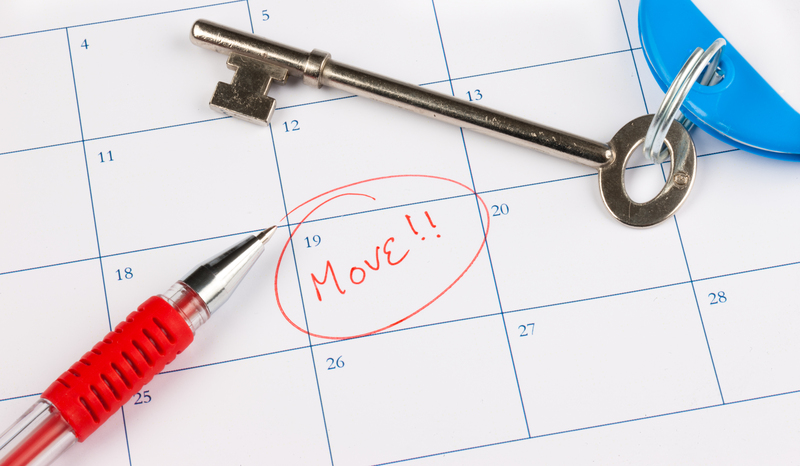Thinking of DIY for Piano Moving? Think Again
Posted on 01/06/2025
Thinking of DIY for Piano Moving? Think Again
Are you considering DIY piano moving? You're not alone. Many homeowners are tempted to undertake the task themselves, believing it can save time and money. However, piano moving is a unique challenge that demands expertise. Whether you own a grand, upright, or spinet, moving a piano without professional help can be a risky decision. In this comprehensive guide, we'll explain why piano moving should never be a do-it-yourself project. You'll learn about the risks, costs, logistics, and benefits of hiring professional piano movers. So, before strapping on those work gloves, read on--your beloved instrument may depend on it!

Understanding the Complexity of Moving a Piano
Why Are Pianos So Difficult to Move?
A piano is not just another piece of furniture. It's an elegant, intricate instrument comprised of thousands of delicate parts. An average upright weighs between 300 to 800 pounds, while some grand pianos can tip the scales at over 1,200 pounds! Movement, even over short distances, can cause internal damage if the proper precautions aren't taken.
- Size and Weight: Pianos are large, heavy, and awkwardly shaped--making them difficult to handle even with a team.
- Fragility: The internal mechanisms are sensitive to even minor shocks and vibrations.
- Value: Pianos are valuable, both financially and sentimentally.
- Irregular Shape: The uneven distribution of weight further complicates transportation.
These factors combine to make piano moving far more challenging than a typical household item. No matter how careful you are, the odds of damaging an instrument--or injuring yourself--are surprisingly high when you attempt to move a piano yourself.
Common DIY Piano Moving Mistakes
Even with the best intentions, amateur movers often make mistakes that can have costly consequences. Here are a few common DIY errors:
- Underestimating the Weight: Many first-timers misjudge just how heavy and cumbersome pianos are.
- Improper Lifting Techniques: Pianos require specialized techniques to move safely--lifting incorrectly can damage floors and the piano or cause personal injury.
- Using Inadequate Equipment: Standard dollies or moving straps often aren't sufficient for heavy musical instruments.
- Insufficient Manpower: Underestimating the number of people required can result in dropped pianos and serious accidents.
- Ignoring Environmental Challenges: Tight staircases, sharp corners, and uneven flooring increase the risk of collision and scratching.
If you're still thinking about do-it-yourself piano moving, you might want to reconsider.
The True Risks of DIY Piano Moving
Risks to the Piano Itself
- Structural Damage: Even a slight bump can knock the instrument out of tune, shift internal components, or dent the exterior.
- Broken Legs or Casters: These delicate components can easily break under improper handling, leading to expensive repairs.
- Surface Scratches: Wood finishes can suffer scratches and scuffs from walls, doorways, or moving tools.
- Soundboard & Strings Damage: The heart of the instrument is easily compromised without correct support and stabilization.
Risks to Your Home and Belongings
- Damaged Floors: Dragging or dropping a piano can gouge wood, crack tile, or tear carpeting.
- Banged-up Walls & Banisters: Navigating tight spaces puts both piano and home at risk of impact damage.
- Broken Fixtures and Furniture: Improper planning and maneuvering can be disastrous for home interiors.
Risks to Your Health
- Back and Muscle Injuries: Pianos are heavy--lifting without proper technique or assistance can lead to serious harm.
- Crushed Fingers & Toes: Mishandling often results in painful pinches or crushed digits.
- Slips and Falls: Navigating stairs or ramps under heavy weight adds significant danger.
It's important to ask yourself: is it worth the risk to your treasured piano, your home, or your well-being?
Is DIY Piano Moving Really Cheaper?
For many people, the temptation to move a piano themselves comes down to perceived cost-savings. But is it truly less expensive in the end? Let's take a closer look at the real costs involved with DIY piano transportation.
Equipment and Supplies
- Heavy-duty Dolly: Suitable for pianos, these can rent for $30-$60 per day.
- Moving Blankets: Vital for protecting surfaces--expect to pay for at least a half-dozen.
- Straps, Ramps, and Boards: Additional equipment for safe lifting and maneuvering.
- Rental Truck: A large moving vehicle is required to accommodate household pianos, typically costing $50-$100 per day plus mileage.
These expenses add up quickly, and they don't include the value of your time, potential property damage, or the cost of repairs if something goes wrong.
Hidden Costs
- Repairs: Fixing a scratched, broken, or un-tuned piano can cost hundreds--or even thousands--of dollars.
- Health Expenses: Medical bills from injuries or therapy for back strain are a real possibility.
- Insurance: Most homeowner's policies will not cover damage from DIY moving accidents.
When you factor in the risk of damage to yourself, your home, and your piano, DIY piano relocation often turns out to be far more expensive than hiring a professional.
The Advantages of Hiring Professional Piano Movers
Expertise and Experience
Professional piano movers are trained specialists. They understand the nuances of safe piano transport--from wrapping and securing internal components, to navigating tight spaces and uneven ground. Their expertise means your instrument arrives at its destination in the same condition it left.
Specialized Equipment
Unlike general movers, piano moving services come equipped with:
- Piano Skids and Sliders for easy and safe movement across all floor types.
- Hoisting Equipment for maneuvering pianos through windows or balconies when stairs are not feasible.
- Custom-built Ramps to ensure gentle handling on stairs and elevated surfaces.
- High-Quality Moving Blankets and wrapping gear to protect the piano surface and internal parts.
Insurance and Peace of Mind
A reputable piano moving company is fully insured. If--on the rare chance--something does go wrong, the cost of repairs or replacement is covered. For priceless family heirlooms or top-tier instruments, this peace of mind is invaluable.
Time and Efficiency
With the right team and tools, professional piano moving services can often complete the job more swiftly and with less disruption than any do-it-yourself attempt. This means less stress, less risk, and more time enjoying music in your new home.
Common Myths About DIY Piano Moving
"I Moved My Couch--How Much Harder Can a Piano Be?"
While a couch is bulky and awkward, the science of moving a piano is on another level. The delicate balance, sensitive internal structure, and substantial weight set pianos apart from standard furniture.
"I Can Always Just Get Friends to Help"
Good intentions aside, most friends and family members aren't trained piano movers. Without professional guidance, the risk of injury or devastating damage significantly increases.
"It's Just Across Town, So DIY Should Be Fine"
Distance rarely makes moving a piano easier. Even a move to the next room requires expertise and the right equipment to ensure the instrument, flooring, and walls remain unharmed.
What Do Professional Piano Movers Actually Do?
When you hire a piano moving company, you're securing not just physical labor, but proficiency in every aspect of the process, including:
- Assessment and Strategy: Reviewing doorways, hallways, stairs, and the best way to navigate your specific environment.
- Preparation: Removing delicate components, pedals, and securing the instrument in moving blankets and straps.
- Transportation: Utilizing specialized vehicles equipped with air-ride suspensions designed for musical instruments.
- Reassembly and Placement: Setting up your piano in its new location, ready for tuning and playing.
Each step is carefully planned to guarantee the safety of your piano and property.
How to Choose the Right Piano Moving Professionals
If you decide to hire professionals, make sure they are:
- Licensed and Insured: This protects you against unexpected mishaps.
- Well-Reviewed: Look for customer testimonials and high ratings online.
- Experienced: Choose movers who specialize in piano relocation, not just general furniture moving.
- Transparent about Pricing: Clear, itemized estimates help avoid surprise costs.
Don't be afraid to ask questions and compare quotes before making your choice.

What If You Absolutely Must Move a Piano Yourself?
While hiring professionals is always preferred, if circumstances absolutely require a DIY move, follow these basic guidelines:
- Gather at least 3-4 strong, able-bodied helpers.
- Rent proper piano-moving equipment and padding supplies.
- Plan your route--measure all doorways, hallways, and stairwells ahead of time.
- Protect the keyboard lid and internal mechanisms with secure wrappings.
- Lift with your legs, not your back, and communicate constantly with your team.
- Never tilt a piano on its side without proper support and stabilization.
- After moving, schedule a piano tuning with a professional technician.
Again, these steps do not guarantee success. The best solution is always to hire qualified piano movers.
Final Thoughts: Avoid DIY Piano Moving Nightmares
Undertaking your own piano move may seem like a cost-effective solution, but the risks involved--to your instrument, your home, and your health--are simply too great. Trust your piano to professionals who understand the value and fragility of these marvelous instruments.
Next time you're tempted to attempt DIY piano moving, remember: the money "saved" is rarely worth the consequences. Instead, invest in the expertise and peace of mind professionals offer. When your piano arrives safely in its new home, in perfect condition, you'll be glad you left the heavy lifting to the experts.
Want a smooth, safe, and stress-free piano move? Call your local professional piano movers today!





